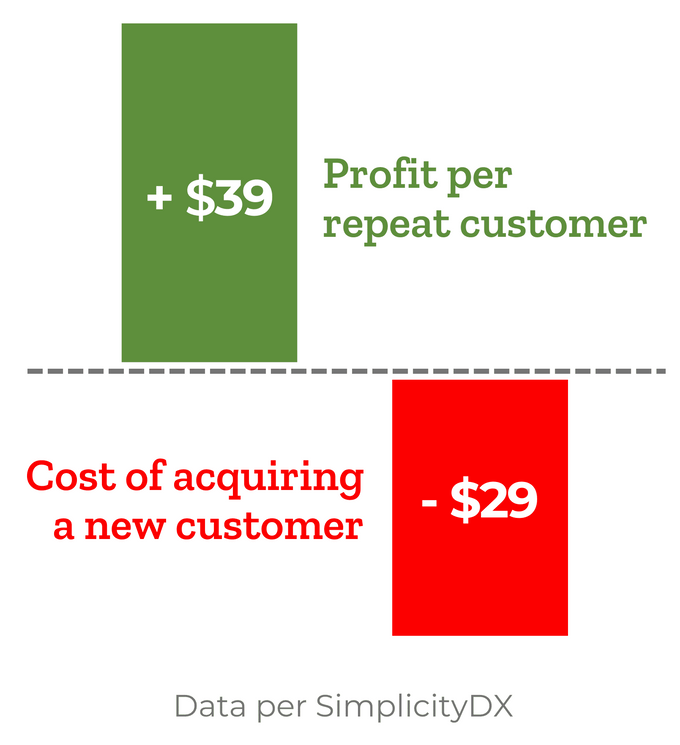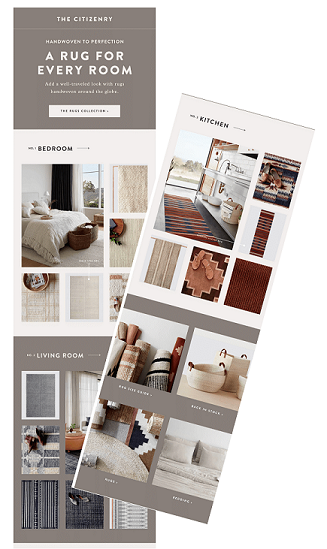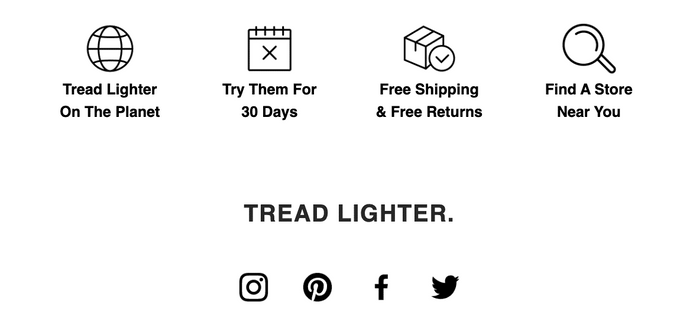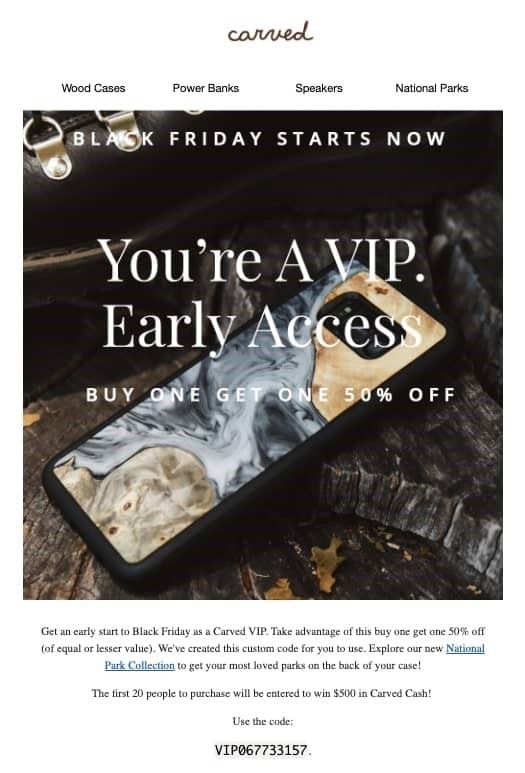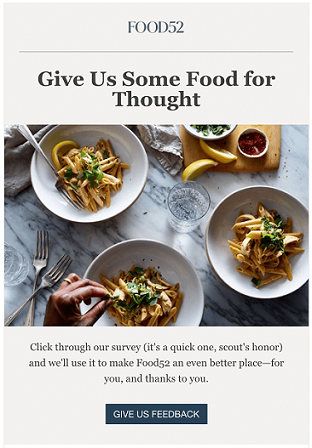How to Improve Your Customer Retention Strategy With Email Marketing
Updated May 5, 2023
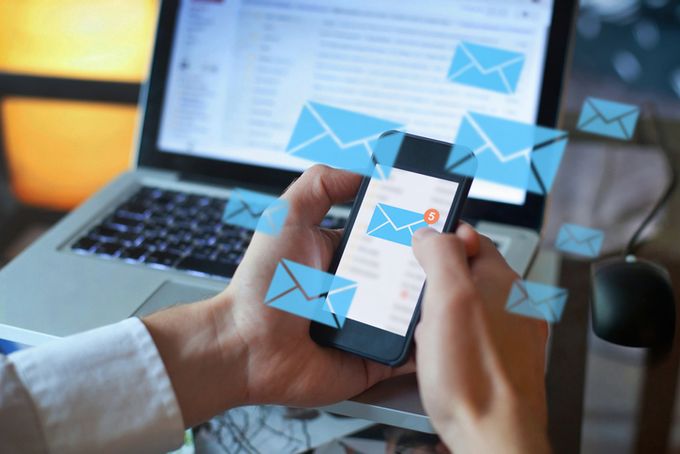
You’ve probably heard that acquiring new customers costs more than keeping them. Most studies show acquisition marketing is six to seven times more expensive.
Fishing for new blood certainly is part of the ecommerce merchant’s toolbox, but devoting energy to customer retention marketing is much more advantageous.
Email marketing is the best vehicle for doing it. We’re looking at why that is, along with five tips to get the most out of it. But first, let’s dive deeper into why ecommerce merchants should invest more in retention marketing.
What Is Retention Marketing and Why Is It So Important?
Before you even start to think about ROAS and customer retention strategies in general, remember that the goal of retention marketing is to turn customers into repeat buyers. Such marketing campaigns and initiatives aim to drive higher engagement so that the brand is top of mind.
Retention marketing is worthy of your resources for two particular reasons:
- You’re not wasting money on the hunt. You’ve already got the first-party data of current customers who — we assume — are happy with your brand.
- Repeat customers are more profitable than first-timers. One study shows merchants reap an average of $39 in profits for every repeat customer purchase. They lose $29 for every new customer, primarily because of the cost of customer acquisition (CAC) and higher product return rates.
From a broader perspective, the more customers who repeatedly spend on your brand, the higher the net profit throughout your mutual relationship. This is called customer lifetime value (LTV). And the higher the LTV, the better you can justify the CAC. The optimum is a 3:1 ratio, where your LTV is triple that of the initial CAC.
» Discover 4 benefits of customer retention analysis for your Shopify store
5 Tips for Using Email Marketing to Retain Customers
Full disclosure: we are an email marketing software company with considerable bias.
That said, email marketing is the ultimate customer retention strategy besides excellent customer service.
Leading retailers agree. They cited email as the top investment (87%) when polled on their 2022 resource allocation plans for retention marketing strategies, beating out loyalty programs and SMS.
They’ve got good reason to trust in email marketing. It has an impressive return on investment: for every $1 spent on email marketing, the average return is $42.
Of course, keeping customers around requires maintenance. Some of our tips apply to all types of email marketing, no matter the target. Others specifically cater to nurturing customer relationships.
1. Provide Variety
How often do you receive an email from a brand, and it’s a case of deja vu? Every promotion sounds the same. If you haven’t unsubscribed, then you’ve stopped opening them.
Don’t be a brand that emulates this email marketing behavior. Provide a mix of valuable content that engages your customers and makes people excited to open your newsletters.
There are times for sales promotions, announcing new releases, and addressing pain points. It’s nice to toss in a slice of your brand’s story every so often, too.
And for meatier value, think educational and inspirational. Style guides, for instance, are perfect for apparel-related merchants but also handy in providing advice around arranging/displaying products. The key is curating content so the customer doesn’t have to think.
Imagine you’re on the quest to spice up your space with a rug. But online searches make your head spin because interior design is not your strong suit. The example below from The Citizenry could be just the intervention needed.
The email highlights pieces from its rug collection by showing how they could work in different rooms. It’s an excellent tactic for leading people toward imagining the possibilities for their own homes, versus a product shot without the surrounding context. It brings things to life.
We also appreciate the section that takes viewers to a rug size guide, providing additional information and styling tips.
2. Make a Footer That Functions
You may wonder why the last section of an email is pertinent to retaining customers. Seems like real estate of little significance, right?
Wrong. Not everyone will scroll to the bottom. But others will, which makes it ideal for reiterating the vital stuff you want people to affiliate with your brand.
A “footer that functions” serves as reinforcement for those who have already invested in you. The more they see the same block of messaging — we’re talking simple icons accompanied by short, descriptive words — the more you build trust and grow brand affinity. (It also can tip the scale for securing a first-time purchase.)
Allbirds has a polished retention marketing strategy worth dissecting.
All icons link to a landing page with more information. Here’s what we like about the footer:
- It calls out its “tread lighter” brand value loud and proud; any brand that stands for something — sustainability, a cruelty-free approach — should do the same
- It overrides common friction points of shipping and returns; bonus points for offering a free 30-day trial
Infuse your footer with elements that communicate your brand’s value. Alleviate pain points, lean into your audience or niche, and drive home your unique selling proposition. Stick to three or four icons in total, as anything more is overwhelming.
Contemplate adjustments for Black Friday and holiday marketing, honing in on common friction points during the Q4 season. For example, we see ecommerce merchants broadcasting a buy now, pay later option. Take the opportunity to feature complementary services such as customization or gift wrapping, or highlight a return policy to help reduce return rates.
3. Implement Automation
One of the most powerful aspects of email marketing is the ability to nurture subscribers and make them forget about the competition. An easy way to do it is with email automations.
An email automation is a message (or series) triggered when a subscriber takes a particular action. Once you activate one, it quietly works in the background.
Welcome and abandoned checkout email automations are the most widely known and used, but there’s an entire group of automations specifically targeted at retaining customers.
Consider developing any or all of the following:
- New customer automation. Acknowledge your subscriber’s first purchase. Invite them to join your loyalty program. Provide a customer service point of contact to answer questions. You want to keep the momentum going.
- Post-purchase automation. We call this a “get ready” email. Unlike a transactional order confirmation message, post-purchase automations build excitement as the customer waits for the order to arrive. It’s ideal for sharing information, such as care tips or installation instructions.
- Repeat customer automation. It’s always a good idea to show gratitude to customers who buy from you more than once. That spells loyalty, so they deserve recognition. Tell them why their confidence in your brand matters.
- Lapsed purchaser automation. Connect with customers who haven’t purchased from your shop in a while. It could be 90 days or longer, depending on what you sell. This automation is especially impactful when you offer consumable products — like pet food or cosmetics. Use it as a reminder that it’s time to replenish.
A lapsed purchaser email from Grubhub
Pick which automations are suitable for your brand. Consider a multi-part series if it makes sense. Sprinkle in small promotions, such as a discount or free shipping, to entice an order. You might even use them to ask for a review.
4. Use Segmentation
Ecommerce merchants that personalize their marketing have a huge advantage in retaining customers. A survey cites that 71% of consumers expect brands to personalize their marketing. Not only that, but more are frustrated when it doesn’t happen. An even greater percentage will recommend brands that personalize marketing to their family and friends.
Email segmentation is a terrific vehicle for sending relevant messages. It’s the practice of tailoring emails for a subset of subscribers. There are many options when creating customer segments, from purchase behavior to demographics. Typical means for grouping include:
- High-value customers who have passed a certain threshold of spending
- Customers who join your loyalty program
- Wholesale customers
- Placing customers by residential location
- Making segments per product category purchased
The example from Carved is a classic example of how to employ segmentation in your email marketing. The brand grants early access to VIPs for Black Friday sales. A custom code at the bottom reassures the customer that this invite isn’t for everyone.
Carved’s email scrapes the surface of segmented email marketing. Consider giving perks to loyalty program members. Reach out to customers when you debut a complementary product or service to one they purchased. You could even identify those who bought during the holiday season and haven’t returned since, and follow up with a message six months later.
» Learn about the cost of customer acquisition in e-commerce and how to find yours
5. Survey Your Customers
People like their voices to be heard. They want to know that their opinion matters, especially as a consumer. Surveying them equals empowerment.
You could send a survey to your entire list, including subscribers who have never bought a thing. But customers have some skin in the game, as they use your products and have better insight into your brand than onlookers. The email message itself can be short, like Food52 does.
Question them about the new products they’d like to see or services that interest them. The goal: understand how you might better meet needs before a competitor swoops in.
The results are data points for improving your business. Answers may open your eyes to new solutions worth pursuing or turn your attention to flaws that need fixing.
And if you make changes based on their input, let customers know how valuable they are in shaping your business.
Use Email Marketing to Show Your Value
Resist viewing customer retention marketing as just another promotional tactic. Seeing it through such a narrow lens won’t reap the desired benefits.
Instead, know that good retention marketing strategies give customers value well beyond their purchase. When you’re motivated to strengthen relationships with your customers — versus spew sales pitches — you’re empowering your business to flourish.
So, we challenge all ecommerce merchants to examine their email marketing programs. How are you doing with our five tips? How well are you providing variety, harnessing your footer, using email automations, sending segmented emails, and surveying your customers?
Find a job in email marketing on Jooble.



